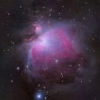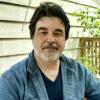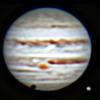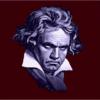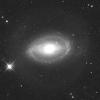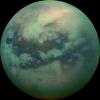I just purchased a used Nikon D5100 back and batteries and want to try doing some general Astro pics with it. My question is what do you suggest I look for to hook it up to my scopes ( orion slt120, celestron 6se, and a 8 inch dobsonian. Not looking to set the world on fire but would like to get some planet, moon, galaxy and star cluster shots. Also planning to try and capture some Milky Way shots. Any advice and places to look would be much appreciated. Thanks.

Just purchased camera - need advice
#1

Posted 02 April 2020 - 03:49 PM
#2

Posted 02 April 2020 - 04:27 PM
Do you have any camera lenses to start out with? That's what I started out doing. A nice 200mm or 300mm lens is going to make your life a whole lot easier compared to using even the ST120 at 600mm. Depending on the framing of the shot, a good 24-50mm lens is ideal for wide field milky way shots.
In general, the mount is far more important than the scope you use. The long-exposure times mean that even small tracking errors in the mount make a big impact on your image. What mount do you plan to use?
Also, I'm sure others will disagree with me, but I think the best place to start doing astrophotography is your backyard, or with 10-15 miles of your house. Driving 2 hours to a dark sky site and figuring out everything on the fly is a recipe for disaster. You should (in my opinion) start simply in your backyard, and drive to dark-sky locations after you have a nice routine established.
Hope this helps!
#3

Posted 02 April 2020 - 06:41 PM
As stated, it would be better to try lenses on the camera first before trying to image through a telescope, at least for the deep-sky stuff. But if that 120mm refractor is not on an equatorial mount, it is going to be a little difficult. I couldn't find anything matching "Orion slt120," except the possibility that it is a model of achromatic refractor older than Orion's current ST120. If "slt" was just a typo and it actually is an ST120 and furthermore is the equatorially-mounted version (here), then you could mount the camera on the top of the front tube ring (it has a 1/4-20 screw for that). You will at minimum need the optional RA motor drive (here).
While it would not be impossible to take photos of deep-sky objects through an ST120, it wouldn't be my first choice for that (or my second or my third). For one thing, as a fast achromat it has a considerable amount of chromatic aberration. Worse, the EQ-3 mount it is on is also a little flimsy for a telescope that size, photographically speaking. Still, I am pretty sure people have done it. But it may be a little frustrating getting acceptable results.
As for the other telescopes:
Celestron Nextstar 6SE: You can do globular clusters by stacking lots of short exposures, which are a necessity because of the altazimuth mount (field rotation as the scope follows the cluster). Get one of these and a T-ring to connect the camera to the scope. Of course, you can get decent shots of the moon, too.
Regarding planets, you can capture them with your DSLR through the 6SE but the images will be much too small without a Barlow. Even so, planets are best captured using a lunar/planetary camera that connects to a computer and allows uncompressed video capture at 60fps. Special (but free) software uses the best images from the video and stacks them to yield a high-resolution image (more or less -technically, there is more going on there).
8-inch Dobsonian: Given the 6SE, I would just continue to use this for visual only.
Edited by Alen K, 02 April 2020 - 06:59 PM.
#4

Posted 03 April 2020 - 01:59 PM
A 48mm T-ring for Nikon and 2" and or 1 1/4" nose pieces to make the connection.
You can find all at either Ageena Astro, Orion Telescope, Astronomics.
Edited by cosmo59, 03 April 2020 - 02:04 PM.
#5

Posted 03 April 2020 - 02:32 PM
Congrats to the new camera Lenny. There are a couple of things to list here in order to get some decent results.
For planets, moon I have never used this model of camera (I have the same D5100), so for that someone else could chip in.
Right out of the bet you will not be able to take longer than 30 sec exposures with that cam without any "help". Although it is a great camera you will need either a laptop and software (like me), or some sort of a shutter release to keep the shutter open longer than 30 sec. At best that will limit you to star clusters.
Furthermore, is this a camera for AP strictly or are you planning to do daytime shots as well?
There are two main modifications I'd recommend if it's AP only. First, this would be the more important one is to hack the main firmware (very easy to do), this will give you true raw data, and renders the camera very close the the ZWO ASI071MC camera, less the cooling. You will get better data calibration as well and this hack will clear "star eater" noise reduction which is default for Nikon. Since you can "unhack" the firmware, I'd recommend this mod even if you have plans using the cam for daytime photography.
The second mod is more particular to AP, and that would be removing the IR filter, but since you've mentioned you are not looking to set the world on fire I think this you'd want to avoid for now.
Regardless if you use any of your scopes or a camera lens, these are obstacles you're gonna have to overcome.
#6

Posted 07 April 2020 - 06:02 PM
Lenny
I would start off by taking the camera out and mounting it on a sturdy tripod with the lens that came with it. If you're using the stock lens which is 18 to 55 mm you'll be surprised at what you can get. At 18mm try a shot at 15 seconds at 55 mm try a shot at 6 seconds. A single shot is not going to look like much but when you collect a lot of them and I mean a lot of them and stack them using deep Sky Stacker you'll be surprised at what it picks up. There is some really good videos on YouTube on how to take images of the night sky using crop sensor cameras. I would also agree with leaving the dobsonian as a visual viewing scope.
#7

Posted 08 April 2020 - 10:03 AM
How dark are your skies?





